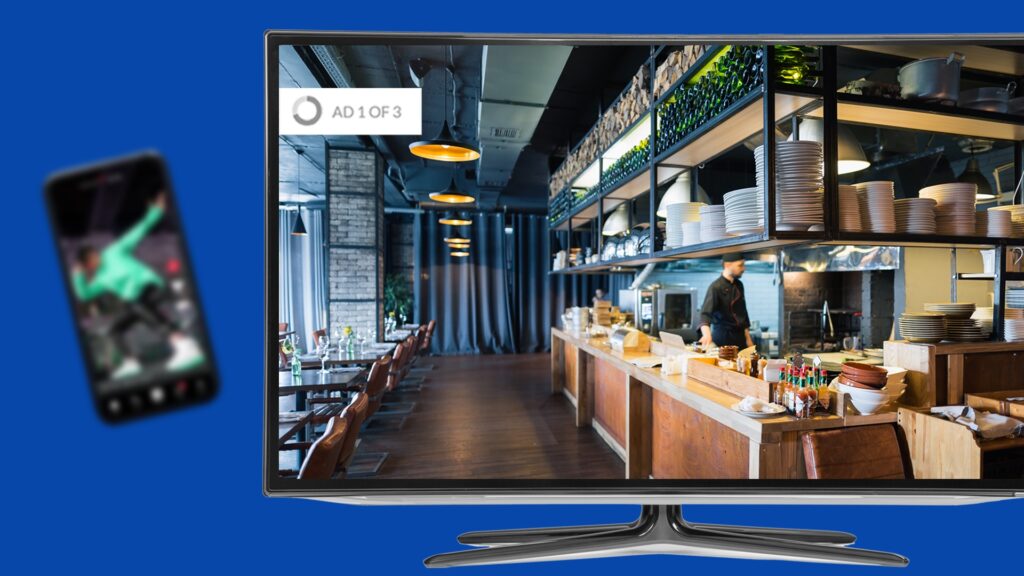Seeing Connected TV Through a Search Marketer Lens
by Jaci Schreckengost
3 Min Read
CES 2024: Stagwell (STGW) and MNTN Announce Partnership in Unified Performance SolutionsLearn More
A look into social media’s advertising problem, and how marketers are pivoting toward Connected TV

4 Min Read
It wasn’t too long ago social media was the golden goose for advertisers. Nowadays, not so much. A quick read of recent headlines can show you why, but the reasons go deeper. And interestingly, those reasons are fueling a need to seek out alternatives—resulting in a shift toward Connected TV advertising. More on that later.
Years of controversy have done a bit of damage to social media, both in the eyes of users and advertisers. And while that has impacted its viability as an ad channel, it was Apple’s iOS 14.5 privacy update that acted as a hammer blow.
Rolled out in early 2021, the update known as ATT (App Tracking Transparency) gave users the choice on whether their data would be tracked between apps. Apple prompted users to make the decision to opt-in to data tracking, which may seem innocuous, but had an immense effect on how many users consented. According to research published by Statista in September, only 25% of users have opted in. In other words, three in four iPhone users aren’t allowing mobile apps—social networks included—to share data.
This has effectively hamstrung social ad solutions’ ability to target users and measure ad efficacy. The two strongest tools marketers had for generating and tracking success were made weak. And that’s made it more difficult for advertisers to generate the same results as they did before—especially with a trend of rising CPMs.
For an ad channel that traditionally vacuumed up performance marketing budgets, this was a devastating development. In the wake of the changes, Meta announced that it would cost them $10B in ad revenue. This drop illustrates the impact privacy changes have had on social advertising—but it’s not the only thing influencing advertisers’ need to seek out alternatives.
While privacy updates have impacted advertisers’ bottom lines, it’s the headlines full of controversy that have affected brand equity.
Social media platforms have seen their fair share of scandals, from election tampering, to hosting offensive content, and troubles with data security. Recent headlines have caused advertisers to pull their budgets, which include notable names such as General Mills, Volkswagen, and United Airlines. This isn’t a recent phenomenon either. A similar exodus took place in the summer of 2020 that saw Coca Cola, Adidas, Verizon, and Starbucks (just to name a few) pull ad spend from another major social platform. And while the response two years ago was an apologetic pledge for more content moderation, recent controversy has yet to reach this same conclusion.
There is currently a potential PR headache attached to advertising in the social space. As the controversy continues on social, and major voices in the ad industry advise caution, one must wonder where the ad spend will end up.
Thankfully, those seeking an alternative have a ready-made solution waiting in the wings—and it’s one that is becoming a favorite among advertisers.
If budgets are increasingly moving away from social media, where are they headed? To the TV screen.
Connected TV, or CTV for short, has staked a claim as a prominent channel in advertisers’ media mix. Research conducted by Insider Intelligence and eMarketer estimates CTV ad spend will reach $43B by 2026. That’s a 299% increase from 2020.
It’s interesting to note where the money is coming from. MNTN and Digiday found that 58% of surveyed marketers had shifted budget from linear TV to CTV. But tellingly, 41% of marketers also shifted budget from their paid social media channels.
CTV offers advertisers everything they previously had with social, but without all the baggage. When equipped with the right ad stack—one that focuses on performance optimization and measurement, versus a more traditional focus on reach—they can bring their targeting and performance strategies to CTV.
Case in point, MNTN’s CTV marketing software offers advertisers the ability to target their ideal audiences, set a performance goal such as return on ad spend (ROAS) or cost per acquisition (CPA), among others, and generate measurable results like they used to achieve with social. Similar to a paid social ad solution, MNTN introduces an intuitive UI and automation into both campaign setup and management to simplify TV advertising without sacrificing impact.
When you consider the growing popularity of streaming TV alongside advertisers’ need to seek out alternatives, there’s little doubt we’ll see more of a shift from social to CTV advertising. It’s only a matter of time that CTV cements its place alongside paid search and social as the go-to solutions for performance marketing.